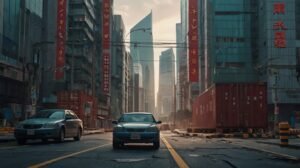
Introduction
China, the world’s second-largest economy, has been a focal point of global economic discussions for decades. Once celebrated as the engine of global growth, the Chinese economy now finds itself at a critical juncture. After experiencing rapid expansion for nearly four decades, signs of economic fatigue have emerged, leading to questions about whether China is on the verge of a robust rebound or facing a prolonged period of slowdown.
As we delve into the complexities of China’s economic landscape, we will explore various factors contributing to its current state, including domestic policies, global trade dynamics, and the impact of geopolitical tensions. Additionally, we will analyze the potential pathways for China’s economy, considering both optimistic and pessimistic scenarios. Our goal at **zaroraterishta.com** is to provide readers with a nuanced understanding of China’s economic crossroads and the implications for both the domestic and global economy.
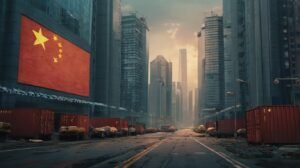
Section 1: Historical Context of China’s Economic Growth
The Economic Miracle
China’s economic transformation over the past few decades is nothing short of remarkable. Following the implementation of market-oriented reforms in 1978 under the leadership of Deng Xiaoping, the country shifted from a centrally planned economy to a more market-driven one. This transformation led to unprecedented economic growth, lifting hundreds of millions of people out of poverty and establishing China as a global manufacturing powerhouse.
By the early 2000s, China was often referred to as the “world’s factory,” producing a vast array of goods for export. The country’s rapid industrialization and urbanization fueled domestic demand, creating a cycle of growth that seemed unstoppable. The Chinese economy became a key driver of global growth, contributing significantly to world GDP.
The Global Financial Crisis and Recovery
The 2008 global financial crisis posed a significant challenge to China’s economy. In response, the government implemented a massive stimulus package aimed at stabilizing growth and preventing a recession. This package included infrastructure investments, tax cuts, and increased credit availability.
While the stimulus helped China rebound quickly, it also led to rising debt levels among local governments and state-owned enterprises. The reliance on credit-fueled growth raised concerns about the sustainability of the economic model and the potential for asset bubbles.
Recent Developments
In recent years, China has faced a series of challenges that have cast doubt on its economic trajectory. Trade tensions with the United States, the COVID-19 pandemic, and domestic policy shifts have all contributed to heightened uncertainty. As the world emerges from the pandemic, the question remains: can China regain its momentum, or is it facing a prolonged period of stagnation?
Economic Structure and Transition
China’s economy is transitioning from a manufacturing-based model to one that emphasizes services and innovation. This shift is essential for sustainable growth, as it seeks to reduce dependency on exports and foster a more balanced economic structure. However, this transition presents challenges, including the need for workforce retraining and the development of new industries.
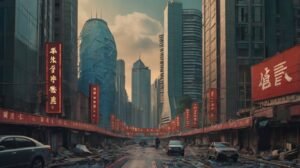
Section 2: Current Economic Landscape
Economic Growth Rates
China’s economic growth has slowed significantly in recent years. After posting double-digit growth rates for decades, the country’s GDP growth fell to around 3% in 2022, the lowest in decades. Analysts attribute this slowdown to a combination of factors, including structural adjustments, demographic shifts, and external pressures.
Inflation and Consumer Spending
Inflation has become a concern as prices for essential goods and services rise. While China has historically maintained low inflation rates, recent spikes in food and energy prices have affected consumer purchasing power. As households face rising costs, consumer spending may be curtailed, further dampening economic growth.
Consumer Confidence
Consumer confidence in China has fluctuated in recent years, influenced by economic uncertainty and external factors such as trade disputes. High inflation and rising living costs have led to cautious spending behaviors, impacting sectors such as retail and hospitality. The government’s efforts to stimulate consumer confidence through various measures will be crucial for driving economic recovery.
Unemployment and Labor Market Dynamics
The labor market in China is facing challenges, particularly among young graduates. With millions entering the workforce each year, job creation has not kept pace with demand. High youth unemployment rates have raised concerns about social stability and the potential for unrest. The government’s ability to create jobs and provide opportunities for young people will be crucial for maintaining social harmony.
Real Estate Market Challenges
The real estate sector, a significant driver of China’s economic growth, has encountered serious challenges. A combination of excessive debt among property developers, regulatory crackdowns, and declining home sales has led to a slowdown in the housing market. The crisis surrounding Evergrande, one of China’s largest property developers, has underscored the fragility of the sector and raised fears of a broader economic contagion.
Technological Advancements and Challenges
China has positioned itself as a leader in technology, investing heavily in sectors such as artificial intelligence, 5G, and renewable energy. However, the government’s regulatory actions against major tech companies have raised concerns about the sustainability of innovation in the sector. Balancing regulation with the need for innovation will be crucial for maintaining China’s competitive edge.
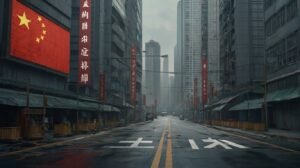
Section 3: Domestic Policies Influencing Economic Direction
The Shift Towards Consumption-Driven Growth
In recent years, Chinese policymakers have sought to transition the economy from an export-driven model to one that is more reliant on domestic consumption. This shift aims to create a more sustainable economic model that is less vulnerable to global trade fluctuations. However, achieving this transition has proven challenging.
Encouraging Consumer Spending
To promote consumption, the government has implemented various measures, including tax cuts, subsidies, and social welfare programs. These initiatives aim to boost disposable income and encourage spending among households. However, consumer confidence remains fragile, and many households are hesitant to spend due to economic uncertainty.
Regulatory Changes and Their Impact
The Chinese government has undertaken a series of regulatory changes aimed at addressing issues such as financial risk, environmental sustainability, and data privacy. While these measures are intended to promote long-term stability, they have created short-term disruptions in various sectors, including technology and finance.
The Tech Crackdown
The government’s crackdown on major tech companies, including Alibaba and Tencent, has raised concerns about innovation and investment in the sector. While the aim is to create a more equitable environment, the increased scrutiny has led to uncertainty, causing some investors to pull back.
Environmental Policies and Economic Growth
China’s commitment to environmental sustainability has also influenced economic policies. The government has set ambitious targets for reducing carbon emissions and transitioning to renewable energy sources. While these efforts are essential for addressing climate change, they may also impose short-term costs on industries reliant on fossil fuels.
Demographic Challenges
China is facing significant demographic challenges, including an aging population and declining birth rates. These trends pose long-term risks to economic growth, as a shrinking workforce may lead to labor shortages and increased pressure on social services. Policymakers must address these demographic shifts to ensure sustainable economic development.
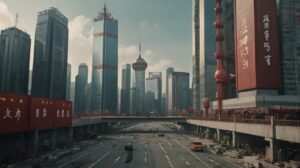
Section 4: Global Economic Dynamics and Their Impact on China
Trade Tensions and Tariffs
The trade war between the United States and China has had significant repercussions for the Chinese economy. Tariffs imposed by both countries have disrupted trade flows, affecting exports and imports. As a result, China has sought to diversify its trade partnerships, fostering relationships with other countries to mitigate the impact of tariffs.
The Belt and Road Initiative
China’s Belt and Road Initiative (BRI) represents a strategic effort to enhance global trade connectivity and expand its influence. By investing in infrastructure projects across Asia, Europe, and Africa, China aims to create new markets for its goods and services. However, the success of the BRI is contingent upon the economic stability of participating countries.
Geopolitical Tensions and Supply Chain Vulnerabilities
Geopolitical tensions, particularly in the South China Sea and Taiwan Strait, pose risks to global supply chains. Any escalation in tensions could disrupt trade routes and impact China’s manufacturing sector. As companies seek to mitigate risks, some are considering diversifying their supply chains away from China.
The Role of Global Economic Conditions
China’s economic health is closely linked to global economic conditions. A slowdown in major economies, such as the United States and the European Union, can impact demand for Chinese exports. Conversely, strong global growth can bolster China’s recovery by increasing demand for its goods.
Foreign Investment Trends
Foreign direct investment (FDI) plays a significant role in China’s economic growth. While the country has been attractive to foreign investors, recent regulatory changes and geopolitical tensions have raised concerns. Policymakers must address these concerns to maintain investor confidence and attract FDI.
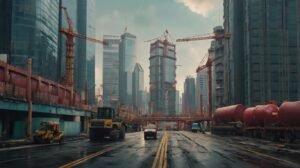
Section 5: Potential Pathways for China’s Economic Future
Scenario 1: Robust Recovery
In an optimistic scenario, China could experience a robust economic recovery driven by several factors:
1. **Resilient Consumer Spending**: If consumer confidence improves and households feel secure in their financial situations, consumer spending could rebound, fueling economic growth.
2. **Successful Transition to Consumption-Driven Growth**: If the government successfully implements policies to transition to a consumption-driven economy, it could reduce reliance on exports and create a more sustainable growth model.
3. **Global Economic Recovery**: A strong recovery in global economic conditions could boost demand for Chinese exports, supporting growth in key sectors.
4. **Technological Innovation**: Continued investment in technology and innovation could drive productivity gains and enhance China’s competitiveness in the global market.
5. **Infrastructure Investment**: Ongoing investments in infrastructure projects can stimulate economic activity and create jobs, contributing to a positive economic outlook.
Scenario 2: Long-Term Slowdown
Conversely, a pessimistic scenario could see China facing a prolonged economic slowdown characterized by:
1. **Persistent Structural Challenges**: If underlying structural issues, such as high debt levels and demographic shifts, remain unaddressed, economic growth could stagnate.
2. **Continued Trade Tensions**: Ongoing trade tensions and geopolitical conflicts could hinder China’s ability to engage in global trade, impacting its manufacturing sector.
3. **Weak Consumer Confidence**: If households remain cautious about spending due to economic uncertainty, consumer-driven growth may not materialize.
4. **Job Market Challenges**: High youth unemployment and a lack of job opportunities could lead to social unrest and decreased consumer spending, further exacerbating economic challenges.
5. **Environmental Costs**: If environmental policies impose significant costs on industries, it could lead to short-term economic pain, impacting overall growth.
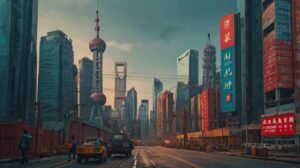
Section 6: The Human Impact of Economic Change
The Impact on Everyday Lives
As China navigates its economic crossroads, the lives of ordinary citizens are profoundly affected. Economic changes can lead to shifts in employment opportunities, income levels, and overall quality of life.
Job Security and Employment Opportunities
The transition from an export-driven economy to one focused on domestic consumption may create new job opportunities in service sectors, such as retail and healthcare. However, it may also lead to job losses in traditional manufacturing industries. As workers adjust to changing economic conditions, reskilling and upskilling initiatives will be crucial to ensure that individuals can adapt to new roles.
Rising Living Costs
Inflationary pressures can strain household budgets, particularly for low- and middle-income families. As the cost of essentials rises, families may need to make difficult choices regarding spending on education, healthcare, and daily necessities.
Social Stability and Well-Being
Economic uncertainty can impact social stability and well-being. High unemployment rates and rising living costs may lead to increased anxiety and stress among the population. The government’s ability to address these concerns through effective policies will be critical for maintaining social harmony.
The Role of Government in Supporting Citizens
To navigate the challenges posed by economic change, the Chinese government plays a vital role in supporting its citizens. This support can take various forms:
1. **Social Safety Nets**: Expanding social welfare programs and safety nets can provide crucial assistance to those affected by economic changes. This support can help alleviate financial burdens and promote social stability.
2. **Education and Training Programs**: Investing in education and vocational training can equip individuals with the skills needed to thrive in a changing job market. By fostering a culture of lifelong learning, the government can prepare its workforce for future challenges.
3. **Mental Health Support**: Addressing mental health issues stemming from economic stress is essential for promoting overall well-being. Increased access to mental health services can help individuals cope with the challenges of economic uncertainty.
4. **Affordable Housing Initiatives**: To combat rising living costs, the government can implement affordable housing initiatives that help low-income families secure stable housing. Access to affordable housing can improve overall quality of life and contribute to social stability.
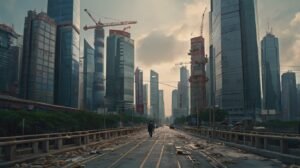
Section 7: Conclusion
China stands at a critical crossroads, facing the dual challenges of potential economic rebound and long-term slowdown. The choices made by policymakers, businesses, and citizens in the coming years will significantly shape the future of the Chinese economy. By navigating these challenges with foresight and adaptability, China can work towards a more sustainable and resilient economic model.
At **zaroraterishta.com, we aim to provide valuable insights into the evolving economic landscape and its implications for individuals and businesses alike. As China continues to grapple with its economic crossroads, staying informed and engaged will be essential for understanding the broader implications for the global economy.
In conclusion, whether China experiences a robust recovery or faces a prolonged slowdown will depend on a complex interplay of domestic policies, global economic dynamics, and the resilience of its citizens. The future remains uncertain, but with strategic planning and adaptability, there is potential for China to emerge stronger from this economic crossroads.
